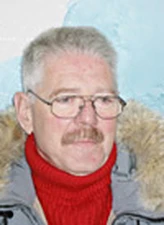Bernhard Stauffer

The 2006 Hans Oeschger Medal is awarded to Bernhard Stauffer for his contributions to ice core research, in particular for methodological developments, greenhouse gas measurements and ice chemistry.
Bernhard Stauffer was trained as an experimental physicist at the Swiss Federal Institute of Technology. He then joined the group of the late Prof. Hans Oeschger at the University of Bern, where he obtained his doctorate in 1966.
In collaboration with colleagues from the University of Bern, he developed a method to measure the concentration of trace gases of small ice samples. This was a major experimental challenge for various reasons. The dry extraction system was based on a needle crusher and proved to this date to be a reliable tool in avoiding the contamination of gas samples on which the content of carbon dioxide, the most important greenhouse gas after water vapor, was to be measured. Using this device, Stauffer was leading the effort which resulted in the first determination of the concentration of CO2 during the last ice age. This is arguably one of the most important results in paleoclimate research because it defines the range of natural variability of CO2 in the climate system.
Berhard Stauffer also initiated at the University of Bern the measurement of CH4 on ice samples in close collaboration with colleagues from LGGE Grenoble. A wet extraction system was designed with which the gases were expunged from the melted ice sample by multiple cycles of refreezing.
With the capability of analyse the two most important greenhouse gases on small ice samples with high precision, Bernhard Stauffer laid the foundation for a series of key scientific results. His determination of natural fluctuations of CO2 during the last ice age remains a key indicator for millennial changes of the global carbon cycle in the background of rapid climatic changes in the northern hemisphere. The same technique lead to the first high-resolution record of CO2 during the present warm period, and a detailed study on CO2 changes during the last major climate transition. Equally important were the records of CH4 and N2O that were obtained from ice cores from Greenland and Antarctica.
Besides his experimental contributions, Bernhard Stauffer spent many seasons in Greenland and Antarctic where he lead ice core projects. He was one of the driving forces of several European drilling projects such as GRIP and EPICA. For EPICA, he chaired the Science Group and served as Chief Scientist during the field season 2002/2003.
